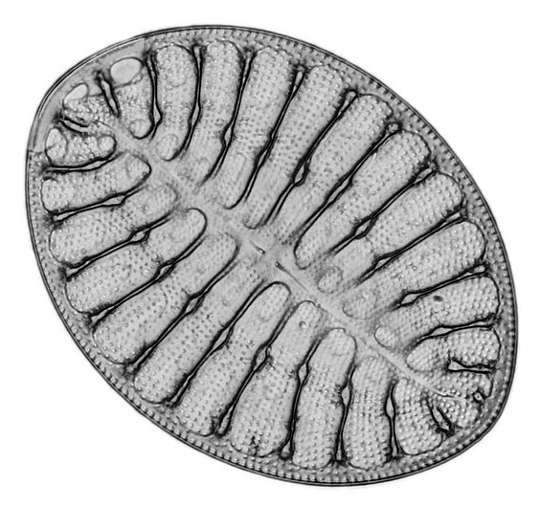This article was published in Scientific American’s former blog network and reflects the views of the author, not necessarily those of Scientific American

The glassy-shelled sediment diatom Cocconeis, emptied of its living contents. Credit: Picturepest Flickr (CC-by-2.0)
The beach is an easy place to visit, but a hard place to live. When the tide hasn’t left you high and dry, you’re assaulted by waves, beaten by tumbling sand, and periodically buried.
Microbes called diatoms and other algae that use light to feed themselves may find themselves entombed for days or weeks without oxygen or light due to the vagaries of wind, wave, and tide. What do they eat? How do they survive?
On supporting science journalism
If you're enjoying this article, consider supporting our award-winning journalism by subscribing. By purchasing a subscription you are helping to ensure the future of impactful stories about the discoveries and ideas shaping our world today.
A team of scientists from Australia, Denmark, and the UK, and Texas decided to scoop up some beach sand and find out. They placed the sand in columns where they could control what chemicals went in and measure what came out. They discovered that the answer is simple: the diatoms and green algae that live in beach sand
ferment their way out of trouble.
Fermentation is familiar to anyone who’s ever wondered where wine, beer, and bread come from. It’s a way microbes can make hay from their fuel stores while cut off the energy bonanza made possible by chemical wild child oxygen. Oxygenic respiration permits enormous quantities of energy to be produced from fuel storage chemicals like starch and sugar. But when oxygen is unavailable, cells can still burn these fuels at much reduced efficiency via fermentation. In a sealed brewing tank, fermenting fungi called yeast generate a trickle of power to run their cells along with carbon dioxide -- which puts the bubbles in beer and bread -- and alcohol.
Something was clearly going on in the dark sand columns because the scientists could see lots of carbon dioxide and hydrogen gas coming out the end. Hydrogen, along with carbon dioxide, is one of the products of fermentation by algae, along with an assortment of odd organic alcohols and lipids like acetate, formate, wax esters, glycerol, or even ethanol (OK, not an odd fermentation product).

For the biochemistry nerds in the audience, the hypothesized algal dark fermentation pathway. Enzyme designations are pyruvate ferredoxin oxidoreductase (PFR) and ferredoxin (FDX). Credit: Fig. 3 from Bourke et al. 2017
Were such products in the column outflows? No. However, some algae and diatoms can retain them for use when the prevailing biochemical winds shift, i.e., oxygen returns. Waste not.
Indeed, when they tested the sediment itself, they found just the sort of complex biochemicals they would expect to be generated by algal fermentation.
To help prove that algae were responsible, they also treated the sand with enough broad-spectrum antibiotic to lay waste to the entire bacterial population and discovered that that did not stem the flow of carbon dioxide. However, when they treated the sand with an algaecide, it dried right up.
It had previously been assumed bacteria were doing most of the metabolic heavy lifting in such sandy marine sediments, so these results are a surprise. That was probably a poor assumption to begin with, because it was already known that algae constituted 10-40% of the biomass in these sediments while bacteria made up less than 10%. The biomass of microalgae in sandy sediments is so large that it often exceeds that found in the illuminated water above it. On the other hand, it is counterintuitive that microbes who depend on the sun for their meal ticket are also going to town in dark, suffocating sediments.
It thus appears that although diatoms and algae are creatures crafted for light, those adapted to live in sand are also formed for making the most of darkness. I suppose there's a lesson there for all of us.
Reference
Michael F. Bourke, Philip J. Marriott, Ronnie N. Glud, Harald Hasler-Sheetal, Manoj Kamalanathan, John Beardall, Chris Greening & Perran L. M. Cook. Metabolism in anoxic permeable sediments is dominated by eukaryotic dark fermentation. Nature Geoscience, November 2016 DOI: 10.1038/ngeo2843